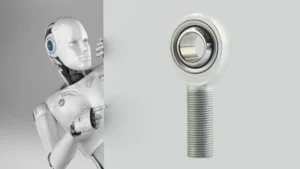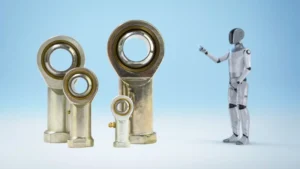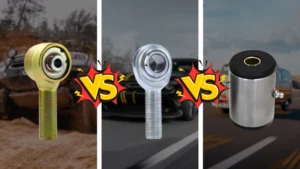Can You Tell the Difference Between a Rod End, Heim Joint, Rose Joint, Spherical Rod End, and Rod End Bearing?
Short answer? Don’t sweat it.
You don’t have to “tell them apart,” because they’re all the same thing.
Yep — one part, five names, a whole lot of confusion.
Today we’re not here to give you a dry engineering lecture (you can find that in a 300-page ISO manual if you’re into that sort of thing). Instead, we’re taking you on a lighthearted tour through the origins of these names — the mix of history, accidents, and good old engineering humor that shaped them.
1. Rod End – The “What You See Is What You Call It” Name
Engineers are practical people. They see a part at the end of a rod, they call it a “rod end.”
That’s it. No marketing brainstorm, no poetic inspiration — just a straight-up description. And because it’s so simple, it stuck.
Back in the day, military blueprints would shout the name in all caps: “ROD END, SPHERICAL, MALE.” If you were an apprentice reading that, you might think the drawing was yelling at you. But the name worked — and now “rod end” is the most universal and least confusing of the bunch.
2. Heim Joint – The American “Celebrity” Name
During World War II, an American inventor named Lewis Rasmus Heim designed a joint that could survive the demands of aircraft control systems. His company, The Heim Company, supplied them in bulk to the U.S. military.
Pretty soon, “Heim Joint” became the name in the U.S., whether or not Heim actually made it. It’s the mechanical world’s version of calling every tissue a “Kleenex.” Heim himself once joked that the proper term “spherical rod end” was too hard for people to remember — so he just used his own name. Smart man.
3. Rose Joint – Britain’s Racing Slang
Across the Atlantic, British engineers were dealing with the same part but a much longer name. The manufacturer Rose Bearings Ltd made them for the Royal Air Force, but “spherical rod end bearing” was a mouthful. So in typical British fashion, they cut the nonsense and just said “Rose.”
On UK race tracks, “swap the Rose” is as common as “check the tires.” But this shortcut has caused its fair share of misunderstandings. One British mechanic once told an American colleague, “Bring me a Rose,” and the poor guy came back holding a bouquet of flowers.
4. Spherical Rod End – The Boring-but-Official Standard
When ISO and DIN wrote the official technical specs, they picked the very literal “spherical rod end.” It’s accurate, it’s descriptive… and it’s boring.
In Germany and many other countries, “spherical rod end bearing” is still the most common name — especially in catalogs, engineering documents, and trade shows. It sounds serious, official, and very… well, German.
You’ll see it in drawings, catalogs, and standards documents, but you’ll almost never hear it spoken out loud unless someone is reading directly from a manual. Some engineers complain the name is so long it barely fits on technical diagrams — the font ends up looking like ant tracks.
5. Rod End Bearing – The SEO-Friendly Version
In Asia’s manufacturing world, adding the word “bearing” helps with search engine results. That’s why you’ll see “rod end bearing” all over B2B platforms — it pulls in buyers searching for “bearings” even if they didn’t know they wanted rod ends.
This sometimes leads to funny questions from customers: “Where’s the bearing inside this rod end?” The answer? You’re looking at it — the spherical part is the bearing.
Final Note
Call it a rod end, Heim joint, Rose joint, spherical rod end, or rod end bearing — it’s all the same clever little joint. The differences are in geography, history, and culture, not in the part itself.
And now, next time someone at the track or in the workshop asks for a “Rose” or a “Heim,” you’ll know whether to grab a mechanical joint… or a bunch of flowers.
You may also like these related articles:
Understanding names is just the start—discover the full picture of types, materials, and sourcing advice in our Heim Joints Buyers’ Guide.






